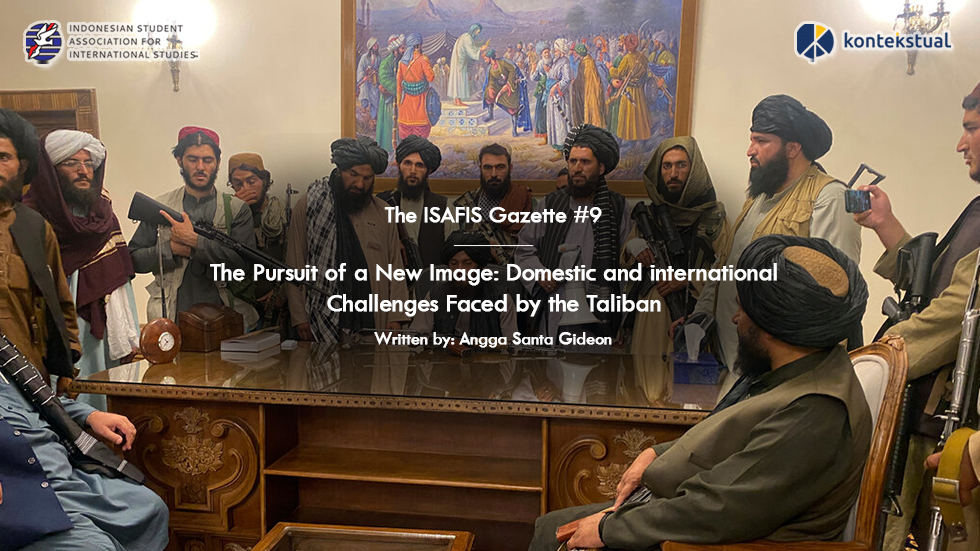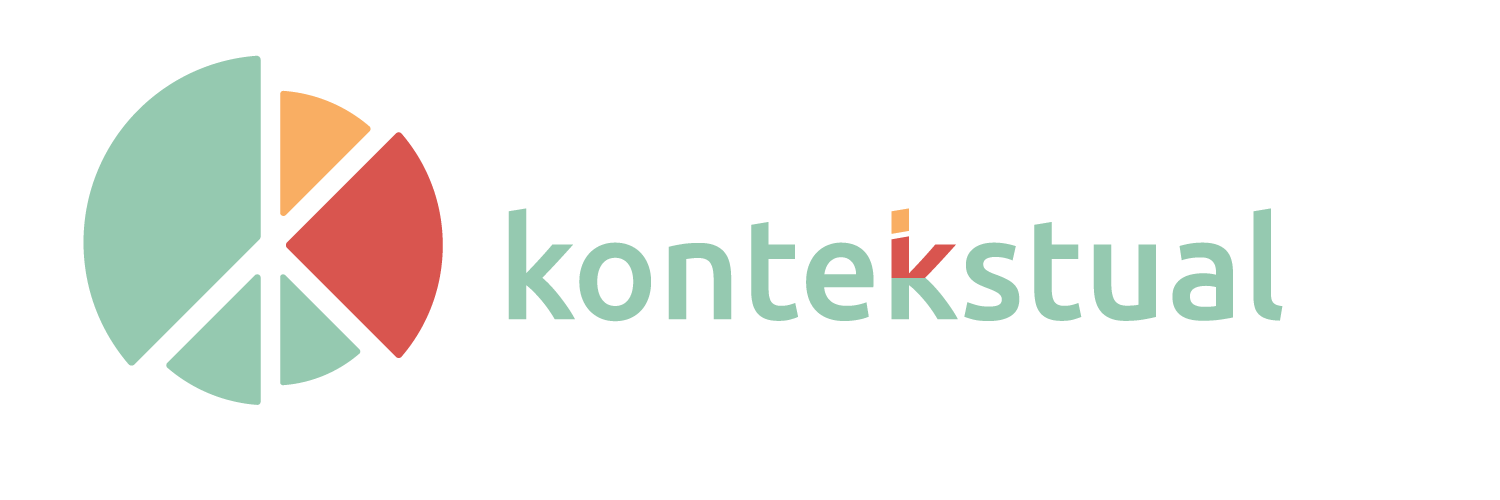The Pursuit of a New Image: Domestic & International Challenges Faced by The Taliban

Illustration from ISAFIS
This article is originally published on ISAFIS’ Medium. Click here to be redirected.
After the withdrawal of the United States and its NATO allies from Afghanistan, the Taliban – also known as the US’ arch-enemy in that country – has dominantly controlled the capital Kabul and became the new ruler of the Afghan government. Not following the predictions expressed by the US Intelligence Community (that stated how Taliban would control Afghanistan six months after the US withdrawal), it turned out it only took Taliban as quick as one week to fulfill US’ prophecy. Afghan President Ashraf Ghani immediately handed over his government to the Taliban group and took cover at the Uni Arab Emirates. This particular hiccup in international relations made headlines in much of the international news and made the public wonder what would happen in Afghanistan next under the rule of the Taliban.
When the Afghan government was officially in the hands of the Taliban, the group’s spokesperson and negotiator, Suhail Shaheen, told The Associated Press that the group would form an open and inclusive government based on an Islamic government. To restore the image of the Taliban, Shaheen claims that the new government will respect the existence of women, allow media freedom, and grant amnesty to former Afghan government soldiers—including contractors and translators who work for international forces (Rasheed et al., 2021). Of course, those efforts will still be made based on the framework of Islam. Taking notice of the spokesman’s claims, the international public is still pessimistic about the Taliban’s statement, especially with their track record where the Taliban is proven to exercise “hard governance”. It needs extra work for the current Taliban government to face challenges domestically and internationally in restoring its image.
For the past twenty years, specifically ever since the Tragedy of 9/11, the Taliban has always been associated with terrorist groups in Afghanistan, particularly Al-Qaeda. To understand this correlation, one must take note that the tragedy happened at the beginning of the Afghan conflict, even acting as a sort of catalyst. The Taliban became the target of the US resistance in the War on Terror counterterrorism mission. This is due to UNSC Resolution 1267 in 1999 that sanctioned the Taliban and Al-Qaeda as affiliated groups in terrorist activities (Rosand, 2004). Globally, this nexus between the Taliban and Al-Qaeda indicates that the Taliban provides and protects its territory for terrorist activities there. This association with terrorism identity had indeed been emboldened after 9/11 when US President George Bush demanded that the leader of the Taliban – the group that rules as the government of the Islamic Emirate of Afghanistan – hand over to the US authorities all Al-Qaeda leaders hiding in the region. Mullah Muhammad Omar, the then leader of Taliban, took no heed of Bush’s orders. This was due to the past events of the Soviet Union’s invasion of the Afghan land, creating this feeling of trauma that made the country fear the possibility of a US-led invasion. Should this happen, then it would singlehandedly contradict the principles of the Taliban as guardians of sovereignty and mujahideen in the Islamic Emirate of Afghanistan.
After the rejection of Mullah Muhammad Omar as the ruling authority in Afghanistan, President Bush immediately prepared a war strategy and overthrew the Taliban government. Resistance against one of the great powers in the world, of course, often does not benefit any country or group. The US launched a labelling propaganda activity intended to undermine the Taliban’s reputation, painting them as a rebel group and a provider of aid to other terrorist groups (Tarzi, 2016). By looking at these roots, restoring the image of a good governance upholder in the post-conflict era will be a challenge for the Taliban, especially in terms of recognition as an inclusive and open government in international fora.
William L. Benoit, who is known for his Image Restoration Theory, stated that the image reputation of a government, or group, could be worsened because of two factors, namely intentional (done by oneself or competitor) or unintentional (wrong statement or wrong actions in public) (Benoit, 1997). These factors are essential to portray the Taliban, as they are already labelled as a fearsome group and government. Based on the hypothesis from Benoit’s theory, more or less, the intentional factor is more dominant. These intentional factors include: (1) the Taliban’s harsh governance model, which is unacceptable to the international community who thinks the Taliban should be more democratic and prioritize human rights, and (2) labelling the nexus of terrorist groups between the Taliban and Al-Qaeda or other terrorist groups in Afghanistan. This basic assumption can be used as an excuse for why the Taliban’s image has been deficient in the last twenty years, and they are trying to restore it.
Through Image Restoration Theory, Benoit also provides at least five strategies that the government can carry out to restore its lousy image (Benoit, 1997). In this section, the author will briefly comment on how the Taliban have carried out this strategy.
First, perform action denial. The Taliban often carry out this act of denial and shift the blame to countries like the US. The author’s assumption seems that this has been done many times by the Taliban and does not adequately restore its image. The position of the Taliban as a party that seems to be an antagonist to actions that are identical to terrorist activities makes it difficult for the public to accept the reasons for their denial.
Second, evading responsibility. This strategy is to avoid responsibility, allowing the group to avoid the coming consequences. It seems that it is not fully implemented by the Taliban, considering that some ideologies and policies have been made and confirmed by the Taliban.
Third, reducing the offensiveness of events. In this section, there are exciting elements in the strategy, namely bolstering (citing positive actions that have been taken in the past by actors), minimization (persuading the public that what happens in the future will not be as bad as they have perceived), and differentiation (comparing one’s mistakes with the mistakes of others). At the third stage of the strategy, the Taliban is being carried out by the strength of its spokesman in interviews on various media and social media such as Twitter, that the Taliban is not as brutal as people imagine and deserves the public’s trust.
Fourth, corrective action, practiced by promising that the Taliban will correct their future actions regarding terrorist activity. As we know in the Doha agreement, the Taliban had promised that it would not allow its territory for terrorist activities. As proven, when there was an attack on Hamid Karzai Airport by the ISIS-K group, the Taliban strongly condemned this action.
Fifth, mortification. The accused admits responsibility and asks for forgiveness. It is difficult to predict this matter considering that the Taliban is a strong group with solid principles.
Based on the assumptions of these strategies, at least one can find a few common threads of what the Taliban are doing to restore its current image. However, this strategy will not be readily acceptable to the public. So, there will definitely be following challenges, both domestically and globally, that tries to hinder this reputation amelioration.
Domestically, the main challenge for the Taliban is to build trust in the non-Taliban public, promoting them that they will protect and be inclusive of every faction in Afghanistan. The status quo of the Taliban government, in the cabinet appointed in September 2021, still solely exhibits Taliban elites. All of them are men, and women are not yet entitled to occupy ministerial posts. On a small note, Taliban Spokesman Sayed Zekrullah Hashimi claimed that women are unable to handle the work of a cabinet minister. To them, a woman’s job is simply giving birth and educating their children with Islamic ethics (Sabin, 2021). In terms of image, this claim is still strongly patriarchal. Even though women are now allowed to get an education until college, the right to work cannot be free from expectation. Several Afghan women’s groups had protested about the inclusiveness of these women, but in these protests, the women still received acts of violence (Hakimi, 2021).
Another thing is about the ability of the Taliban to maintain security stability in Afghanistan. As is known, terrorism groups are still nesting in Afghanistan. The ability of the Taliban to identify and repel these groups is questionable. The image in the past from the nexus of the Taliban’s relationship with Al-Qaeda has not been fully recovered. If the Taliban can manage to contrast and expel these terrorist groups, there is a chance that its image can be restored. In addition, post-conflict development, if it turns out that the Islamic Emirate of Afghanistan becomes better and advanced in its governance, public trust will automatically increase.
Internationally, the clear challenge faced is regarding the openness of the Taliban government to open diplomatic relations with many countries. After the Taliban took control of the city of Kabul, hence demanding a transition of power in the government, many diplomatic representatives chose to leave Afghanistan – especially the US & the NATO alliance. Currently, many countries have chosen to ‘wait and see’ to reopen the operations of their embassies there. While waiting for Afghanistan’s domestic conditions to stabilize, other countries are still figuring out how the political movements will be. It is an essential consideration for countries to study the current leadership and governance of the Taliban and see the potential for good cooperation that can be built. In this part, it is greatly influenced by domestic conditions in Afghanistan.
Apart from the state, an essential thing in regards to the international arena and Afghanistan is the participation and permission of international organizations such as UN Bodies to operate and advise the Taliban government. If the Taliban widely disclose the existence and activities of international organizations, at least it will build an image against the Taliban that they are indeed open to the international community at this time. Currently, relevant parties are still waiting as the Taliban government has just been formed. The main takeaway from this level is that it spotlights one of the most challenging realities, and that is the commitment and realization of policies that the Taliban spokesman has conveyed that the Taliban is now inclusive and open to rebuilding Afghanistan.
Building public trust and restoring a lousy image to a good one is not as easy as turning the palm of the hand. Strategically, the Taliban has succeeded in taking over Afghanistan and becoming the current government. However, if we talk about this image, there are many challenges that the Taliban may face domestically and internationally. The effort requires patient action and commitment from the Taliban to use inclusive and open promises so far as mere rhetoric. We hope that realization can be realized so that the image recovers will follow at the end.
References
Benoit, W. L. (1997). Image repair discourse and crisis communication. Public Relations Review, 23(2), 177–186. https://doi.org/10.1016/S0363-8111(97)90023-0
Hakimi, A. (2021, September 4). Protest in Kabul to Preserve Rights Turns Violent. TOLO News. https://tolonews.com/afghanistan-174508
Rasheed, Z., Ibrahim, A., & Siddiqui, U. (2021, August 17). Taliban offers amnesty, promises women’s rights and media freedom. Al Jazeera. https://www.aljazeera.com/news/2021/8/17/evacuation-flights-resume-as-biden-defends-afghanistan-pullout
Rosand, E. (2004). The Security Council’s Efforts to Monitor the Implementation of Al Qaeda/Taliban Sanctions. American Journal of International Law, 98(4), 745–763. https://doi.org/10.2307/3216698
Sabin, L. (2021). Taliban confirms no women will be made ministers of Afghanistan, saying they should ‘give birth’ instead. INDEPENDENT. https://www.independent.co.uk/asia/south-asia/taliban-spokesperson-afghanistan-women-ministers-b1917937.html
Tarzi, S. M. (2016). Coercive Diplomacy and an “Irrational” Regime: Understanding the American Confrontation with the Taliban. Http://Dx.Doi.Org/10.1177/002088170404200102, 42(1), 21–41. https://doi.org/10.1177/002088170404200102
Angga Santa Gideon is the President of the Indonesian Student Association for International Studies (ISAFIS), and also an international relations student at UPN Veteran Jakarta. He can be found on Instagram with the username @anggasanta and on Twitter @AnggaSGideon.





